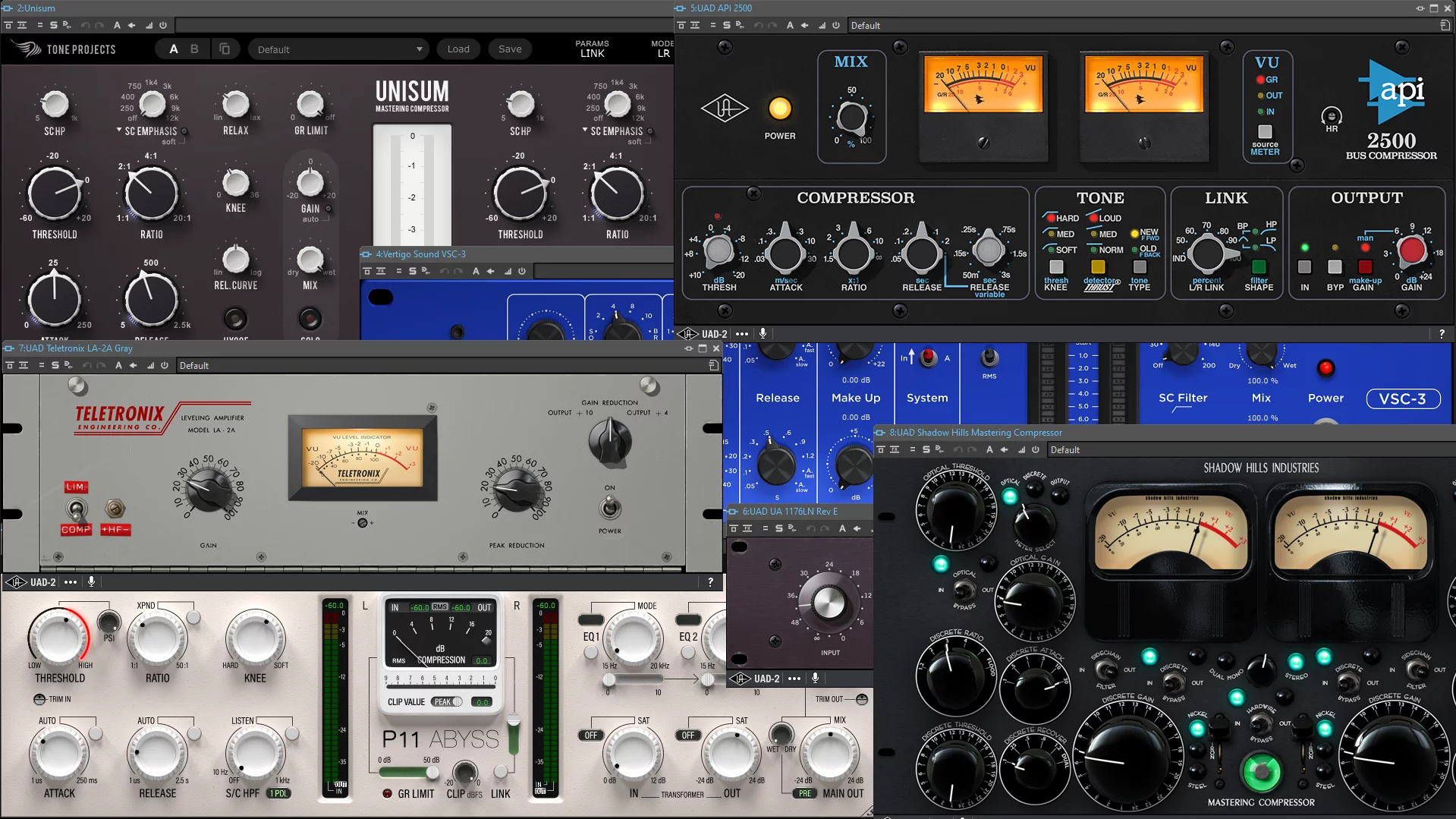There is a common way how the compressor parameters attack and release are explained. As it has turned out a simplified but not completely true story became “standard” and had been passed by and has established a wrong concept of the mechanics of attack and release.
I must admit that I fell into this trap too, back in the days, when I was working on my books.
Here is a clarification:
Back in 2015 I already stumbled across an article of Gregory Scott, founder of Kush Audio, released in the Attackmagazine.com
Attack:
We all know the famous smack, created by an 1176 set to a long attack time creating or supporting a transient-like bump on your vocal track. The initial part of the incoming event would “slip through” before the compressor starts to get into full gain reduction action. This behavior was misinterpreted as a time offset before the compressor starts to work after the threshold had been passed by the input signal.
The point is that this incorrect explanation concept helps to understand the appearance of this significant bump, but in fact it is created by the non-linear response curve of a compressor. Let’s ignore digital compression for a moment, because digital can do things which do not exist in the analog world. You probably know these compression XY graphs (Illustration 1). Such a hard knee response does not exist in the analog world.
Most analog compressors sneak in with the gain reduction and increase gain reduction over time. The different possible curves define the characteristics of the compressor model and built.
The technical correct definition of attack:
The attack time defines the time span by which the compressor has done ⅔ of the total gain reduction work. Mr. Scott brings up an excellent and easy to understand example which is so comprehensible that I borough it from him:
To grasp the concept of “attack” in compression, it’s essential to understand some compression fundamentals. Imagine you have a compressor set with specific parameters: a threshold of -10dB and a compression ratio of 3:1.
- Threshold: This is a level you set in the compressor. It’s like a gate. If the incoming audio signal is below this threshold, the compressor does nothing.
- Compression Ratio: This tells you how much the compressor will reduce the signal above the threshold. In our case, it’s 3:1, which means for every 3dB the input goes above the threshold, the compressor allows only 1dB to pass through.
Now, let’s apply this to an example:
– Imagine your audio signal starts at -11dB, which is below the -10dB threshold. So, the compressor does nothing at this point.
– Now, if your signal suddenly jumps to -1dB, it’s 9dB above the threshold (-1dB – (-10dB) = 9dB).
– With a 3:1 ratio, the compressor wants to reduce this 9dB excess to fit the ratio. It aims to make the output only 3dB louder than the threshold.
– To achieve this, the compressor must reduce the incoming 9dB by 6dB. This reduction of 6dB is what we call “gain reduction.”
The key point here is that the compressor doesn’t waste any time. As soon as the signal exceeds the threshold (-10dB), it starts reducing the signal according to the specified compression ratio (3:1 in this case). The time it takes to respond is what we refer to as the “attack time.” It happens instantly in this scenario, contrary to the misconception that attack time involves a delay before compression begins. In This case the attack time equals the time the compressor needs to maintain 4dB of gain reduction which is ⅔ of the total gain reduction.
Conclusion:
The smack, created by a long attack time, does not come from an offset. It is created, because the gain of the incoming transient rises very fast while the gain reduction response curve pops in instant but usually gently and increases gain reduction stronger over time. The response curve which is stretched in length by the set attack time is the responsible factor for creating the “smack bump” in the output of the compressor.
As we now have covered Attack, Ratio, Threshold, and Gain Reduction, let’s dive into Release in Part 2 of this little story.
Happy smacking!
Friedemann Tischmeyer, October 2023
P.S.: Use the DMFF Plug-in Doctor to check the response curve of your favorit compressors
P.P.S.: In the first picture you can see the 1176 with the attack turned all the way up (maddeningly, with the 1176 this means that the attack is minimally short. You can see that the resulting transient is very small.
In the second picture, on the other hand, the attack time is set to maximum long (left stop) and you can see a resulting transient, the “smack”.



